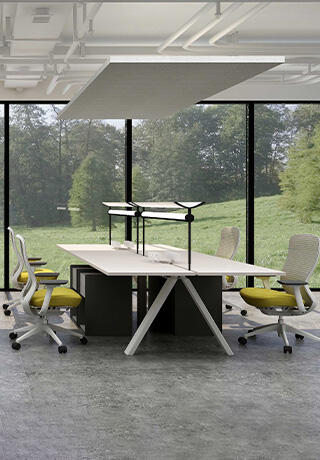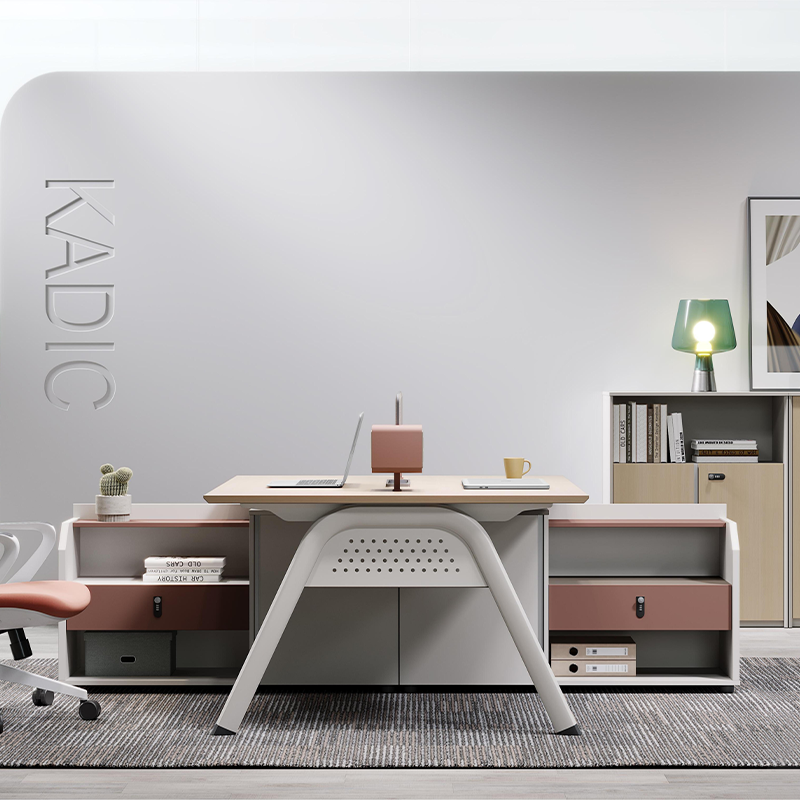Introduction to Office Partition Design
Modern workplaces are rapidly evolving to accommodate new ways of working, collaborative cultures, and hybrid environments. While open-plan layouts once dominated office design, many companies now recognize the importance of balancing openness with privacy, flexibility, and acoustics. This balance is achieved through thoughtful use of the Partition. Far more than a simple divider, a Partition defines space, enhances aesthetics, and supports the functionality of modern offices. Choosing the right style requires considering employee needs, organizational culture, and the type of work being performed.
The Role of Partition in Modern Offices
Space Optimization
A Partition allows businesses to divide larger spaces into smaller, functional zones without the need for permanent construction. This flexibility helps offices adapt to growth and change.
Privacy and Focus
In open offices, distractions can be a major productivity challenge. Partitions provide visual and acoustic separation, allowing employees to focus while still feeling connected to their team.
Branding and Aesthetics
Partitions are not just practical; they also contribute to the overall design language of the office. With a variety of materials, colors, and finishes available, they can reinforce brand identity and create an inviting environment.
Flexibility for Hybrid Work
As remote and hybrid work models become more common, flexible office layouts are crucial. Moveable and modular Partition systems make it easy to reconfigure spaces for collaboration, hot-desking, or private meetings.
Common Partition Styles for Modern Offices
Glass Partitions
Glass is one of the most popular choices in contemporary office design. It provides transparency, allowing natural light to flow while creating separation between spaces. Frameless glass partitions give a sleek, minimalist look, while framed systems add structure. Frosted or tinted glass can enhance privacy without compromising openness. Glass partitions are ideal for meeting rooms, executive offices, and collaborative spaces where visibility is important.

Modular Partitions
Modular systems consist of pre-fabricated panels that can be easily assembled, reconfigured, or relocated. These are highly flexible and cost-effective, making them perfect for growing companies or dynamic work environments. Modular partitions can be made from glass, fabric, metal, or wood, allowing endless design combinations.
Acoustic Partitions
Noise is one of the biggest complaints in open-plan offices. Acoustic partitions are designed with sound-absorbing materials that reduce noise transfer and create quieter work zones. These can be freestanding panels, ceiling-hung dividers, or wall-mounted systems. Acoustic partitions are particularly useful in call centers, creative studios, and collaborative areas where sound levels are high.
Movable Wall Partitions
Movable walls provide the ultimate flexibility. These systems can be folded, stacked, or slid into place to transform a large room into smaller meeting areas or vice versa. Movable wall partitions are common in conference centers, training facilities, and multipurpose office spaces. Their versatility makes them a valuable investment for companies that host frequent events or require adaptable layouts.
Desk Partitions
Sometimes referred to as privacy screens, desk partitions are smaller dividers that attach to or sit on workstations. They provide individual employees with a sense of personal space without isolating them completely. Desk partitions come in various materials including fabric, acrylic, or wood, and they can also incorporate storage or cable management features.
Wooden Partitions
Wooden partitions offer warmth and sophistication, making them a popular choice for offices that want a more natural or traditional aesthetic. They can be solid for full privacy or designed with slats to balance openness and separation. Wooden partitions also pair well with biophilic design concepts that integrate natural elements into workplaces.
Fabric Partitions
Lightweight and versatile, fabric-covered partitions are often used in modular cubicles or temporary dividers. They can be easily customized with different colors and textures, and some are designed to pin notes or documents, adding functionality for employees. Fabric partitions are affordable and effective for creating personal workspaces in open environments.
Green Partitions
Incorporating plants into partitions has become a growing trend as companies seek to improve workplace wellness. Green partitions use planters, living walls, or artificial greenery to divide spaces while promoting a calming atmosphere. These partitions enhance aesthetics and contribute to biophilic design principles that reduce stress and increase productivity.
Choosing the Right Partition for Your Office
Consider Work Styles
The ideal Partition depends on how employees work. For collaborative teams, transparent or low-height dividers encourage interaction. For focus-driven tasks, acoustic or higher partitions provide better privacy.
Evaluate Space Constraints
Smaller offices may benefit from glass or modular partitions that preserve openness, while larger offices can explore movable walls for reconfiguration.
Factor in Acoustics
Noise control is a major consideration in modern offices. Acoustic partitions are essential in environments where sound distraction affects productivity.
Align with Branding
Partitions should complement the company’s brand identity. Whether sleek glass for a tech startup or wooden dividers for a law firm, the design should reflect organizational culture.
Balance Cost and Flexibility
Budgets vary, and so do partition options. Modular and fabric partitions are more cost-effective, while movable walls and premium glass systems represent a higher investment with added flexibility.
Future Trends in Office Partition Design
Modern Partition styles are evolving to meet new workplace demands. Expect to see more sustainable materials such as recycled plastics, reclaimed wood, and eco-friendly fabrics. Smart partitions with integrated technology, such as digital whiteboards, built-in lighting, or acoustic sensors, are also emerging. The blending of partitions with furniture, such as storage-integrated dividers or mobile shelving units, is another trend shaping future office design.
Conclusion
Partitions are essential elements of modern office design, balancing openness with privacy, flexibility, and aesthetics. From glass and modular systems to acoustic, wooden, and green partitions, each style offers unique benefits that can be tailored to the specific needs of a workplace. Choosing the right Partition requires careful consideration of work styles, space, acoustics, branding, and budget. As offices continue to evolve toward hybrid and flexible models, innovative partition solutions will play a central role in shaping environments that support both productivity and employee well-being.
FAQ
Why are partitions important in modern offices?
Partitions optimize space, provide privacy, improve acoustics, and contribute to office aesthetics while supporting flexible layouts.
What type of Partition is best for small offices?
Glass partitions are ideal for small offices because they maintain openness and allow natural light while dividing space effectively.
How do acoustic partitions improve productivity?
They reduce noise transfer, creating quieter work zones that help employees focus and minimize distractions.
Are modular partitions cost-effective?
Yes, modular partitions are affordable, easy to reconfigure, and highly flexible, making them cost-effective for dynamic workplaces.
Can partitions be eco-friendly?
Yes, many partitions are now made with recyclable materials, reclaimed wood, or integrated greenery to support sustainable office design.
What type of Partition is best for collaborative spaces?
Low-height or transparent partitions such as glass dividers encourage interaction while still providing structure.
Do movable wall partitions require special installation?
Yes, movable walls often require professional installation and track systems, but they provide exceptional flexibility in large spaces.
Can desk partitions be customized?
Yes, desk partitions can be made in different materials, sizes, and designs to suit employee needs and office aesthetics.
What role do partitions play in hybrid workplaces?
They allow offices to adapt quickly to changing needs, providing spaces for both collaboration and individual focus.
What are the latest trends in Partition styles?
Trends include sustainable materials, smart partitions with integrated technology, and biophilic designs featuring greenery.
Table of Contents
- Introduction to Office Partition Design
- The Role of Partition in Modern Offices
- Common Partition Styles for Modern Offices
- Choosing the Right Partition for Your Office
- Future Trends in Office Partition Design
- Conclusion
-
FAQ
- Why are partitions important in modern offices?
- What type of Partition is best for small offices?
- How do acoustic partitions improve productivity?
- Are modular partitions cost-effective?
- Can partitions be eco-friendly?
- What type of Partition is best for collaborative spaces?
- Do movable wall partitions require special installation?
- Can desk partitions be customized?
- What role do partitions play in hybrid workplaces?
- What are the latest trends in Partition styles?





